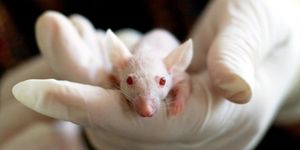Medical Waste Littering the Globe, Pandemic Microplastics
Microplastics are widely accepted as problematic for a number of reasons. They harm wildlife, leech chemicals into our drinking water, and can host dangerous bacteria. Much of these microplastics come from plastic litter in the environment, and in the last two years, a particular kind of litter has been on the rise.
Plastic is incredibly useful for a wide variety of applications, but its most essential purpose in the modern world is its use in the medical field. Being able to have disposable, sterile, single-use items like syringes, tubing, packaging, and PPE like gloves is invaluable. This is a kind of plastic waste we will likely never be able to reduce because it is so very necessary, and there is no good reusable replacement for it.
In the wake of the pandemic, medical plastic waste has increased dramatically all over the world, both in proper waste channels and in our environment. For example, in Wuhan, hospitals were recorded generating a daily average of 240 tons of medical waste, nearly a 480% increase from pre-pandemic.
Face masks, gloves, and wet wipes are commonly spotted littered on the ground in cities all over the globe, and they are floating down rivers and washing up on beaches. It is unknown how these items will break down, and what kinds of effects they will have on the environment. The loops on face masks have a chance to entangle creatures and the fibers can be ingested by various organisms. Disposable masks alone can be a source of thousands to millions of micro and nanofibers entering the marine environment.
Different locations have been seeing pandemic litter in different proportions. In Toronto, Canada, most of the litter observed on the streets were disposable gloves (44%), face masks (31%), and disinfecting wipes (25%). Of the face masks, 97% were designed for single-use while only 3% were reusable. In Lima, Peru, recreational beach-goers littered beaches with face masks (87.7%), face shields(6.5%), and gloves (4.3%). Of the masks, around 70% were designed for single use only. In Kenya, where visiting recreational beaches was banned, there was less litter on the recreational beaches, but more in the urban beach areas, washed ashore from the city streets.
Many of these kinds of plastic waste have not been studied in depth before, and certainly, the amount of this litter could not be conceived before the pandemic started, so the environmental repercussions of this waste breaking down are unknown. It could produce problems for us down the road, so it’s important to dispose of your waste responsibly, in the trash can!
Sources: Environmental Challenges, Marine Pollution Bulletin, Environmental Pollution, Science of the Total Environment









